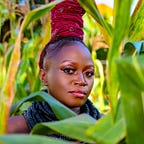DAY 13: Use What Surrounds You to Make Dreams Come True
by Sandra (Suubi) Nakitto at The Dream Lab (Makerere University), Kampala, Uganda 9 June 2017
Making Dream Symbols. Start with what you have around you to make your dreams come true. We have everything we need around us to start.
A Dream lab: A space of thought, discussion about our dreams as well as experimentation with the different materials around us to create dream symbols.
A Dream Symbol: A simplified physical representation of one’s dream/ dreams
A group of youth that had just finished high school were invited to take part in the Dream Lab this time held at Makerere University. As young people that were on their way to collage and about to make serious decisions on which path they would take in life, the Dream lab was a perfect space to share and discuss the future. Since each of the participants were coming from different communities, they were encouraged to carry some materials that they had around them and felt they could re-use.
Sandra Suubi, Age of Wonderland Fellow 2014, explained to the participants the name of the space ; ‘Dream Lab’ and what the aim of the day was. Each participant was to create a dream symbol out of found and reused objects with the aim to communicate that each needed to start with whatever they have around them to make their dreams come true.
Each participant was handed pieces of paper and pen or pencil. On the first paper, each wrote down their dream/ dreams. On the next paper, they wrote down what is involved in the different dreams that they had written down. This brainstorming was done in one word mentions as well as short sentences, whatever came to the participant’s mind. Each of these words/ short sentences was circled. The participants were guided by the what, why, when, how and where questions.
In the next step, the participants with the guidance of their teacher, attached visual representation through writing and drawing along side each of the circled words they had written involved in their dream/dreams.
Each participant then stood up and explained their dream to the rest of the team. This allowed each of the participants to contribute to the ideas of their mates. Together as a team, we discussed the different visuals and came down to particular visuals that stood out in relation to each one’s dream/dreams. Some of these visuals were straight forward, while others were merged together to make each person’s Dream Symbol.
Each participant was then given a board made from cardboard. They were advised to be as creative as they could with this board as they created these dream symbols. The participants used all kinds of materials from used plastic bottles, tins, egg shells, old buttons, old clothes, beads, glitter, used food packaging, thread, newspapers, polythene bags, spoilt phone chargers to mention but a few.
The process of making the symbols stretched the minds of the different participants as they had to use the found materials available that day to interpret their dream symbols. This was a fun yet time consuming process as each material defined what methods one would use to apply it to their work. After a good five hours of movement, experimentation, giving up and getting back to it, cutting, gluing, building, painting, discussion, laughter, questioning, hot sun and sweat, the Dream symbols were ready.
‘Rubish is not rubish’ said Mr Chemonges. Triza said, ‘ I had to be persistent and not give up.’ Tracy said that I learnt that thoughts become things. According to Gloria, change in attitude was key, in her case, she did not like art but this made her appreciate art and she could not believe she was the one that had made her dream symbol. Nanjobe said that one should start with what they have, start small and build what they want and never give up. Angel Lisa learnt never to underestimate herself, where she is and what she has.
The participants made promises that they wrote down on a piece of paper and also spoke out loud and were recorded.
According to Janet Bugembe, a mentor to these young geniuses, the Dream Symbols were a great way to plant the idea, to start and show that with humble beginnings one with passion, consistance and proper use of what they have around them can and will achieve global success. It was a great day.
Read more about the 100 Days of Learning here #onehundreddaysoflearning http://ageofwonderland.nl/https://medium.com/100-day
